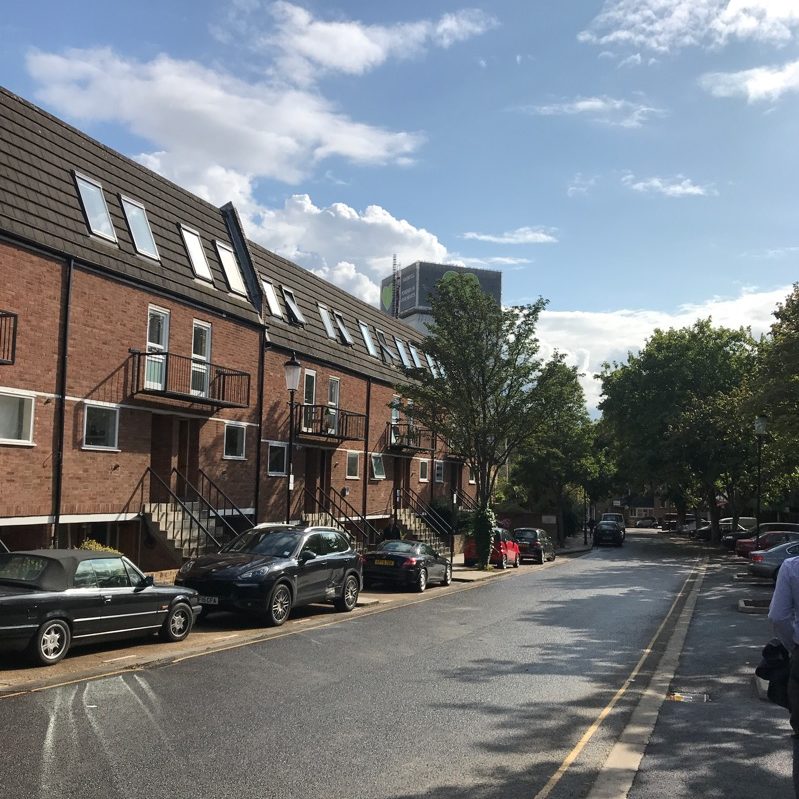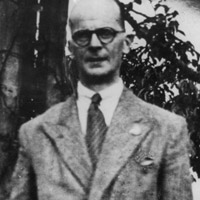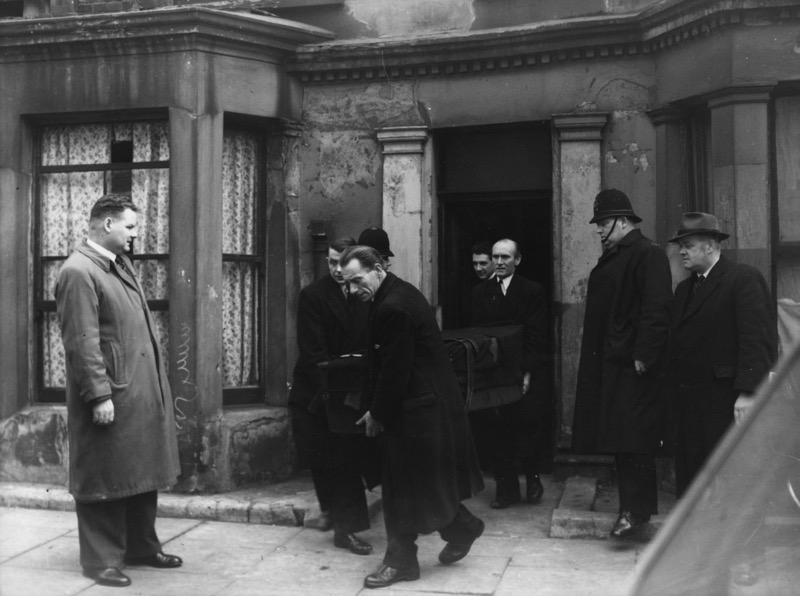John Christie and Ten Rillington Place
10 Rillington Place is an infamous address, with both a famous movie starring Richard Attenborough and John Hurt, and a TV series starring Tim Roth, Samantha Morton and Jodie Comer documenting what happened here. The truth was so grizzly that the building was not only demolished but the address was also re-named. So what is the story behind this innocent-looking street? NB for more dark history, the tower in the background is Grenfell.

John Reginald Halliday Christie was a serial killer and necrophile. He was Britain’s worst serial killer until Dennis Nilsen.

This quiet and respectable looking chap murdered at least eight people – including his wife, Ethel – by strangling them in his flat at 10 Rillington Place, Notting Hill, London.
The bodies were discovered shortly after Christie moved out of Rillington Place. Christie was arrested and convicted of his wife’s murder, for which he was hanged.

Mrs Foodie has known about the story of Rillington Place (She’s a crime geek) and got Mr Foodie to watch the recent BBC Drama about the story.
The focus of the drama is on two of Christie’s victims, Beryl Evans and her baby daughter Geraldine. They alongside her husband, Timothy Evans, were tenants at 10 Rillington Place.
This case sparked huge controversy after Timothy Evans was charged with both murders, found guilty of the murder of his daughter and hanged in 1950. Christie was a major prosecution witness.
When Christie’s own crimes were discovered three years later, serious doubts were raised about the integrity of Evans’s conviction. Christie later admitted to killing Beryl Evans, but not Geraldine. The High Court overturned the conviction in the Evans case and accepted that Evans did not murder either his wife or his child. An official inquiry conducted in 1965–66 by Mr Justice Brabin concluded that it was “more probable than not” that Evans killed his wife, but that he did not kill his daughter Geraldine.
The Home Secretary of the time granted Evans a posthumous pardon for the murder of his daughter during October 1966. The case contributed to the 1965 suspension of capital punishment for murder in the United Kingdom.
John Christie
John Christie seemed a bit of a loner and fantasist. In September 1916, Christie enlisted in the army and in 1918 he was injured in a mustard gas attack. Christie claimed this attack left him permanently unable to speak loudly. He also claimed the attack had rendered him blind and mute for three and a half years. There are no records to show that this was the case. It is thought that this was a psychological reaction to the gassing rather than a lasting toxic effect of the gas, plus a ploy to get attention and sympathy.
Christie was no stranger to crime. He was convicted of several criminal offences including stealing postal orders whilst working as a postman, obtaining money on false pretences and of violent conduct. He committed two further crimes of larceny during 1924. On 13th May 1929, Christie was convicted of assaulting Maud Cole, with whom he was living in Battersea. Finally, he was convicted of stealing a car and imprisoned for three months.
10 Rillington Place
Notting Hill in the 30’s was quite a run-down area of London, filled with poorly maintained multi-occupancy rentals. The house had one outside toilet with no bathrooms and each flat generally having two rooms to use, a living/dining area and a bedroom.
It was within this setting that Christie committed his murders over a ten-year-period between 1943–1953, usually by strangling his victims after he had rendered them unconscious with domestic gas. Christie admitted to killing Ruth Fuerst, a 21-year-old, he buried her body in the back garden.

His second victim was colleague Muriel Amelia Eady. He invited Amelia back to his flat with the promise that he had concocted a “special mixture” that could cure her bronchitis. The mixture, in fact, was Friar’s Balsam, which Christie used to disguise the smell of domestic gas.
Timothy Evans and his wife Beryl moved into the top-floor flat at Rillington Place, where Beryl gave birth that October to their daughter, Geraldine in 1948. It wasn’t until 1949 when Evans informed the police that his wife was dead did police search 10 Rillington Place and find the bodies of Beryl Evans, her daughter, Geraldine, and a 16-week male foetus.
On 11 January 1950, Evans was put on trial for the murder of his daughter, with Christie was a principal witness for the Crown. The jury found Evans guilty despite Christie’s criminal record being brought into public knowledge. Evans was hanged at Pentonville Prison on 9 March 1950. Christie lost his job at the Post Office Savings Bank due to the disclosure of his criminal convictions at the trial.
He wasn’t finished yet, On the morning of 14 December 1952, Christie strangled Ethel in bed. He invented numerous stories as to why Ethel had disappeared, from Ethel had rheumatism and could not write to that she was visiting her relatives in Sheffield.
His spree continued with the death of three more women Kathleen Maloney, Rita Nelson and Hectorina MacLennan.
 The End
The End
Christie moved out of 10 Rillington Place on March 1953, after fraudulently sub-letting his flat to a couple. The landlord let another tenant Beresford Brown use Christie’s kitchen. Brown discovered the kitchen alcove when he attempted to insert brackets into the wall, he peeled back the wallpaper and found the bodies of Maloney, Nelson and MacLennan.
After he left Rillington Place, Christie went to a Rowton House in King’s Cross, which was a workhouse. Here he booked a room for seven nights under his real name and address. He stayed for only four nights, leaving when news of the discovery at his flat broke. He then wandered around London until 31st March when Christie was arrested on the embankment near Putney Bridge after being challenged about his identity by a police officer.
Christie was tried only for the murder of his wife Ethel. His trial began on 22nd June 1953 and Christie pleaded insanity and claimed to have a poor memory of the events. The jury rejected Christie’s plea, and after deliberating for 85 minutes found him guilty.
Christie was hanged on 15th July 1953 at Pentonville Prison. His executioner was Albert Pierrepoint, who had previously hanged Evans. Christie complained that his nose itched. Pierrepoint assured him that “It won’t bother you for long”.
Re-development
Rillington Place was renamed Ruston Close in 1954 and eventually demolished and the road renamed Bartle Road in 1970. A small garden occupies the site where No. 10 once stood.

Where
In memory of:
Ruth Fuerst, 21
Muriel Eady, 31
Beryl Evans, 20
Geraldine Evans, 13 months
Ethel Christie, 54
Rita Nelson, 25
Kathleen Maloney, 26
Hectorina MacLennan, 26




